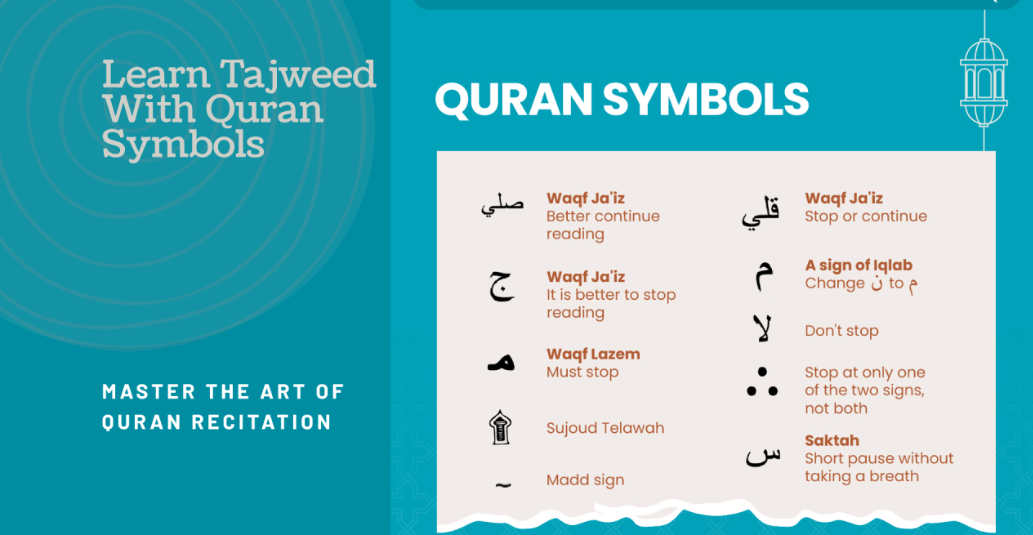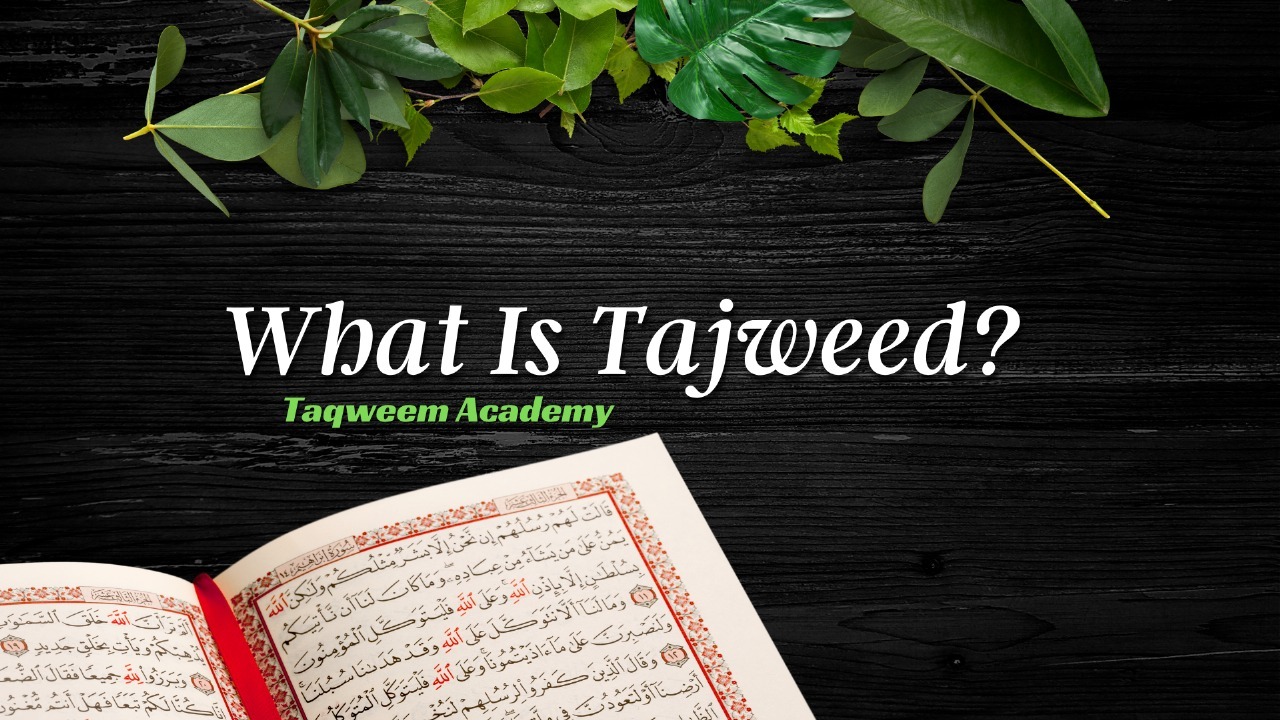Table of Contents
ToggleWhat Is Tajweed and Why Every Muslim Should Learn It
Amina was 32 when she finally decided to return to the Quran.
After years of drifting — life, work, a messy divorce, distant faith — she picked up her Mushaf one quiet evening in Ramadan. Her fingers trembled as she whispered, Bismillah.
Then, halfway through Al-Fatiha… she stopped.
Not because she forgot the verse — but because she suddenly heard herself.
Something didn’t sound right.
The letters felt heavy where they should’ve been light. She rushed where she should’ve stretched. Her tongue skipped letters it didn’t know how to shape. The melody was lost. Her confidence cracked.
Tears filled her eyes — not out of guilt, but from hunger. She wanted to recite like she used to as a child. Like her late grandfather, whose recitation could make even the hardest heart soften.
That night, Amina whispered, “Ya Allah… teach me to speak Your words again.”
And that whisper, that longing, is where Tajweed begins.

What Is Tajweed?
Tajweed (تَجْوِيد) comes from the root word jawwada, meaning to beautify, to make better, to perfect.
In essence, Tajweed in Quran is the sacred science of reciting every letter of the Quran exactly as it was revealed to the Prophet Muhammad ﷺ — with precision, emotion, rhythm, and respect.
It’s not about “sounding Arabic.” It’s about honoring the divine speech.
Tajweed teaches:
-
Where each letter comes from (makhraj)
-
How it should be pronounced (sifat)
-
How long a vowel should be stretched (madd)
-
When to hum through your nose (ghunnah)
-
How to pause, stop, echo, and flow with the ayah
It’s the difference between reading a letter… and reciting a revelation.
Why Tajweed Isn’t Just Technical — It’s Spiritual
Think of the Quran as a love letter from Allah.
Now imagine reading that letter aloud — carelessly skipping words, mispronouncing names, speeding through verses. It would feel… wrong.
Tajweed protects against that. It slows you down. It grounds you. It helps you listen to what you’re saying — and what Allah is saying to you.
Tajweed offers:
Clarity: It ensures the meaning of the verse remains untouched.
Connection: It transforms your recitation into a conversation with the Divine.
Reverence: Every letter is honored. Every vowel is given its right.
Beauty: Your voice aligns with the melody of revelation.
The Core Tajweed Rules (Made Simple for the Soul)
You don’t need to memorize every rule overnight. But knowing the foundations of Tajweed rules helps you start walking the path with love and awareness.
1. Makhraj – Where Letters Are Born
Each Arabic letter has a unique origin point in your mouth, throat, or nose.
-
خ comes from the throat.
-
ب comes from the lips.
-
ل rolls off the tongue tip.
Knowing the makhraj keeps your pronunciation accurate — and the meanings protected.

2. Sifat – The Personality of Each Letter
Letters have character traits — some are heavy (like ص, ض), others are light (like ت, س). Some have echoes, some are quiet.
Tajweed teaches you how to express these personalities correctly. It’s like knowing whether a word should be whispered or sung.
3. Madd – Stretching the Sound of Love
Madd means lengthening a sound for 2, 4, or even 6 beats.
It’s that soothing stretch you hear in:
“Wa laa daaalleeeeeen…”
It slows you down. It gives space to feel the verse. It’s not just technical — it’s poetic.
4. Ghunnah – The Gentle Hum Through the Nose
Certain letters (like ن and م) require a nasal sound — a soft hum through the nose. It creates a peaceful vibration in the recitation.
Once you hear it… you can’t un-hear it. It’s the Quran’s heartbeat.
5. Rules of Noon Sakinah & Tanween (The Blend & Flow Rules)
Depending on the next letter, Tajweed tells you whether to:
-
Say it clearly (Izhar)
-
Merge it softly (Idgham)
-
Hide it slightly (Ikhfa)
-
Change it into a “meem” (Iqlab)
These are subtle, but once you know them, your recitation flows like water.
6. Qalqalah – The Gentle Bounce
Certain letters (ق ط ب ج د) echo slightly when stopped on. Like a heartbeat.
Try it: “Al-Haqq” — feel how the qaf bounces at the end?
It’s delicate, not dramatic — but it adds rhythm and reverence.
7. Shaddah – The Emphasis Beat
When a letter has a shaddah, it’s like saying it twice — with power and pause.
Like in “Ar-Rahman” — the “R” is held and felt.
A Story of Practice: From Embarrassment to Empowerment
Junaid, a 16-year-old from London, once admitted something to his Qur’an teacher.
“I avoid reading in Taraweeh… because people might hear my mistakes.”
His teacher smiled gently and said:
“Even the Prophet ﷺ learned Tajweed — verse by verse. Mistakes aren’t shameful. Ignoring them is.”
With time, Junaid started practicing. Just 10 minutes a day.
Three months later, he recited in front of the same masjid — and broke into tears mid-recitation. Not from fear this time — but from fulfillment.
How to Practice Tajweed (Even If You’re Not a Scholar)
No fancy tools. No perfect accent. Just intention.
Here’s how you can start — even today:
-
Use a Tajweed Mushaf (color-coded Qurans are game changers)
-
Listen daily to skilled reciters (start with Mishary, Husary, or Abdul Basit)
-
Recite out loud — so your ears help your tongue improve
-
Focus on one rule per week — slow progress is still progress
-
If possible, learn with a teacher — even once a week changes everything
FAQs
What is the meaning of Tajweed?
Tajweed means “to beautify” in Arabic. In Quran recitation, it refers to the set of rules that ensure correct pronunciation of Arabic letters, preserving the beauty and meaning of the Quran.
What are the 4 rules of Tajweed?
The 4 basic Tajweed rules include:
-
Izhar – clear pronunciation
-
Idgham – merging letters
-
Iqlab – converting noon to meem
-
Ikhfa – hiding with nasal sound
These apply mainly to noon sakin and tanween.
What is the Tajweed for the Quran?
Tajweed for the Quran refers to the correct way of reciting Quranic verses by following pronunciation rules like makhraj (letter origin), sifat (letter traits), ghunnah, and madd to preserve the original tone and meaning.
What is an example of a Tajweed?
A common Tajweed example is the ghunnah in the word “innaka” (إِنَّكَ) — where the نّ (noon with shaddah) is recited with a nasal sound for two counts.
What is Tajweed in Islam?
In Islam, Tajweed is the science of reciting the Quran correctly. It ensures the message of Allah is preserved, pronounced with respect, and recited just as it was revealed.
What is Tajweed in Urdu?
تجوید کا مطلب ہے قرآن پاک کو صحیح تلفظ، قواعد اور لہجے کے ساتھ پڑھنا تاکہ ہر حرف اور آیت اپنے اصل مفہوم میں ادا ہو۔
What is Tajweed in Arabic?
Tajweed (التجويد) means تحسين الصوت بالقراءة. It refers to perfecting Quranic recitation by applying phonetic rules for accurate, melodic delivery of each verse.
What are Tajweed rules?
Tajweed rules include:
-
Makhraj (letter articulation points)
-
Sifat (letter qualities)
-
Madd (vowel prolongation)
-
Ghunnah (nasal sound)
-
Qalqalah (echoing sounds)
-
Rules for noon sakin, tanween, and meem sakin
What is Importance of Tajweed in Quran?
Tajweed is important to protect the meaning, beauty, and rhythm of Quranic recitation. It helps avoid errors, deepen spiritual connection, and earn reward through precise recitation.
Tajweed Rules PDF
Tajweed rules PDF documents include color-coded guides, examples of madd, ghunnah, and makhraj, helping learners visualize and apply Tajweed when reciting the Quran.
What is Tajweed for kids?
Tajweed for kids involves teaching basic Quran pronunciation rules like stretching vowels, nasal sounds, and letter articulation in a simple, visual, and fun way.




